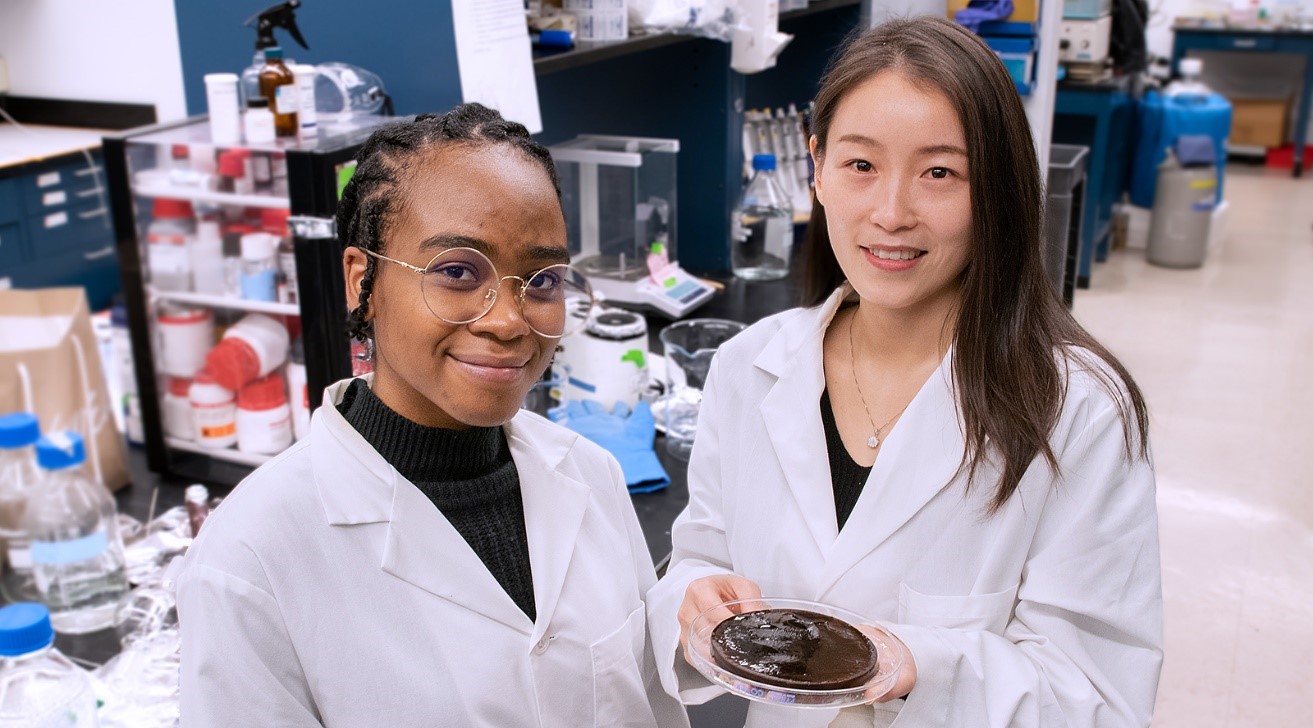New Solar-Powered Gel Filter to Purify Water
Worldwide, over two billion people lack reliable access to clean water. And one potential solution for meeting that need works a lot like a sponge, soaking up clean water while leaving contaminants behind. [1]

Figure 1. The solar absorber gel (Photo by Bumper DeJesus)
Figure 1 shows Researchers Néhémie Guillomaitre and Xiaohui Xu hold a sample of the solar absorber gel, which acts like a sponge to soak up clean water and filter out contaminants. Princeton University researchers have developed a new solar absorber gel technology that could provide clean water access to people worldwide. The gel is a low-cost, easy-to-use solution that utilizes sunlight to filter pollutants like heavy metals, oils, microplastics, and certain bacteria from water. It acts as a sponge, absorbing solar energy to drive purification reactions and effectively remove impurities. This technology has the potential to be an alternative for off-grid water purification, benefiting areas with limited access to traditional water treatment infrastructure. Further research and testing are required to assess its efficiency, scalability, and long-term viability.
The device demonstrates an almost fourfold increase in filtration rate over the first-generation technology, which was developed in 2021. A square meter of the one-centimeter-thick material can produce over a gallon of water in as little as 10 minutes and could provide enough clean water to meet daily demand in many parts of the world.
“There have been many efforts to develop a technology that uses solar energy to create clean, potable drinking water, but they often fail to produce enough water to meet daily needs,” said Rodney Priestley, Dean of the Graduate School, Pomeroy and Betty Perry Smith Professor of Chemical and Biological Engineering, and associated faculty at the Andlinger Center for Energy and the Environment. “This latest iteration of our technology gets us another step closer towards the goal of having a technology driven by solar energy that can actually produce enough clean water to meet daily demand.”
The core of the gel is a polymer known as poly(N-isopropylacrylamide) or PNIPAm, which can either absorb or release water, depending on the temperature.
The hydrogel acts as a sponge to absorb water below 33 degrees Celsius. When exposed to sunlight and heated above 33 degrees, it releases water. By adding polymers like polydopamine (PDA) to the gel's surface, the device can effectively filter contaminants such as oils, heavy metals, microplastics, and certain bacteria from water sources.
The gel is less expensive and simpler to use. Just toss it in a water source until it becomes saturated. Then take it and place it in sunlight and wait for it to release filtered water. Under the midday sun, the gel can release around 70% of the water it absorbs in as little as ten minutes.
“Our first solar absorber gel already had strong performance,” said Xiaohui Xu, a presidential postdoctoral fellow at Princeton University and the study’s first author. “But we wanted to continue making the device even more efficient at filtering water.”
In addition to its enhanced filtration speed, Néhémie Guillomaitre, study co-author and a graduate student in chemical and biological engineering, added that the second-generation solar absorber gel sports other improvements over its predecessor.
“Having anti-fouling properties helps the gel last longer,” Guillomaitre said. “There is less of a need to worry about oils and bacterial films accumulating on the gel’s surface over time and lowering its efficiency.”
“Ideally, this technology could one day be used by anyone concerned about their water quality, regardless of where they live,” Guillomaitre said.
Source: Princeton University
References:
- https://engineering.princeton.edu/news/2023/02/08/solar-powered-gel-filters-enough-clean-water-meet-daily-needs
Cite this article:
Hana M (2023), New Solar-Powered Gel Filter to Purify Water, AnaTechmaz, pp.432

